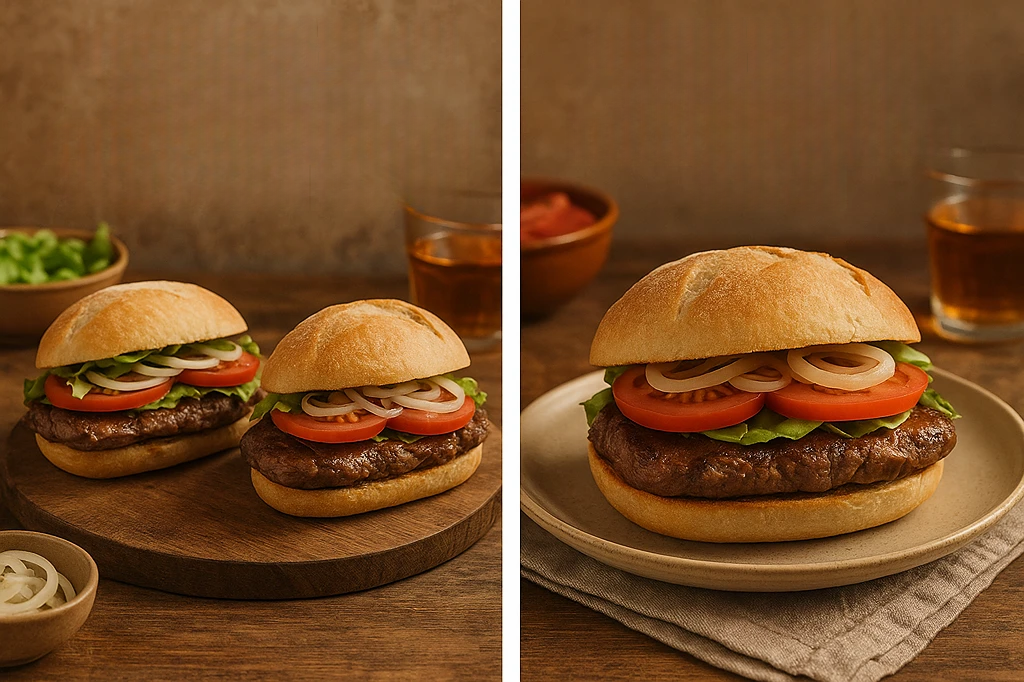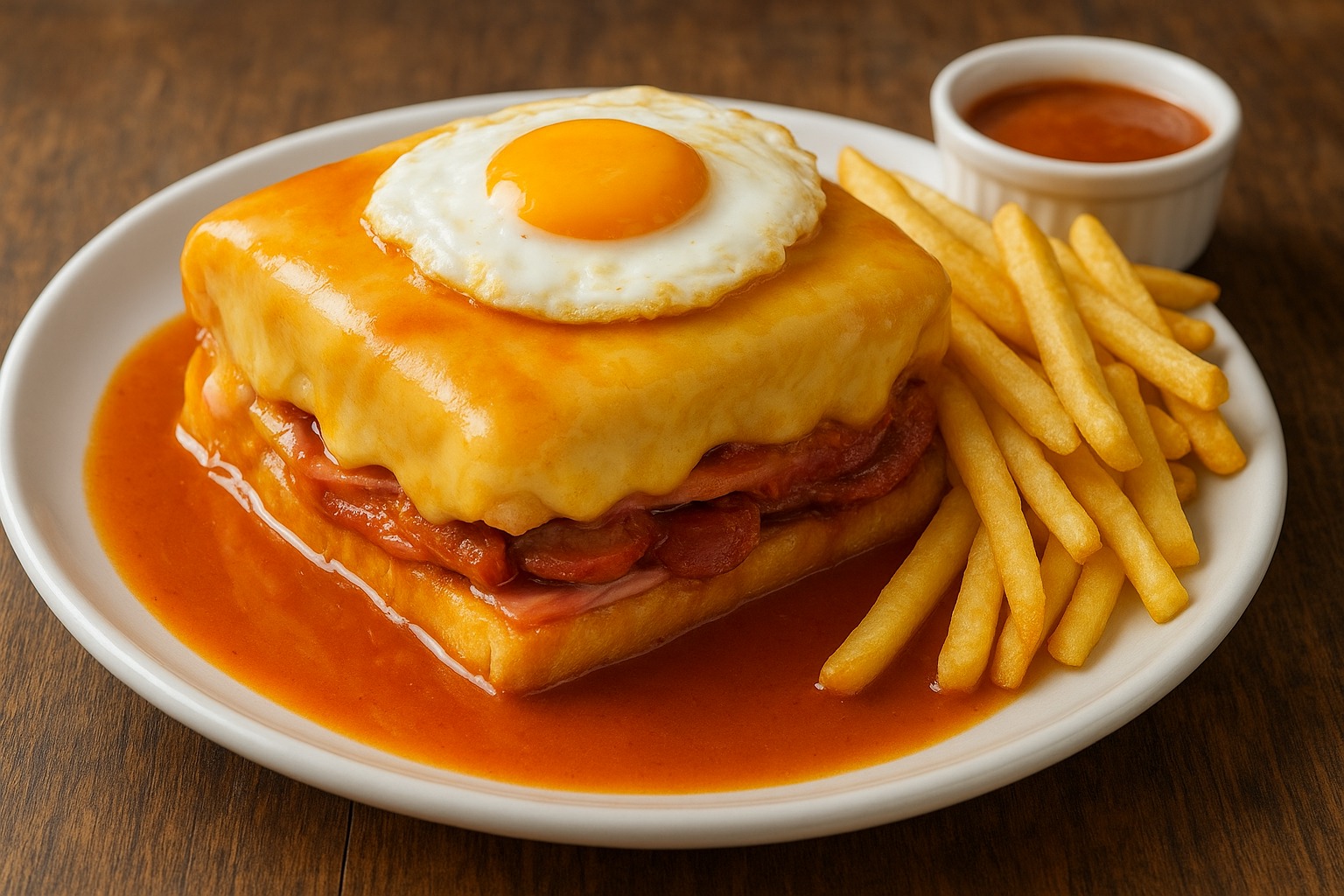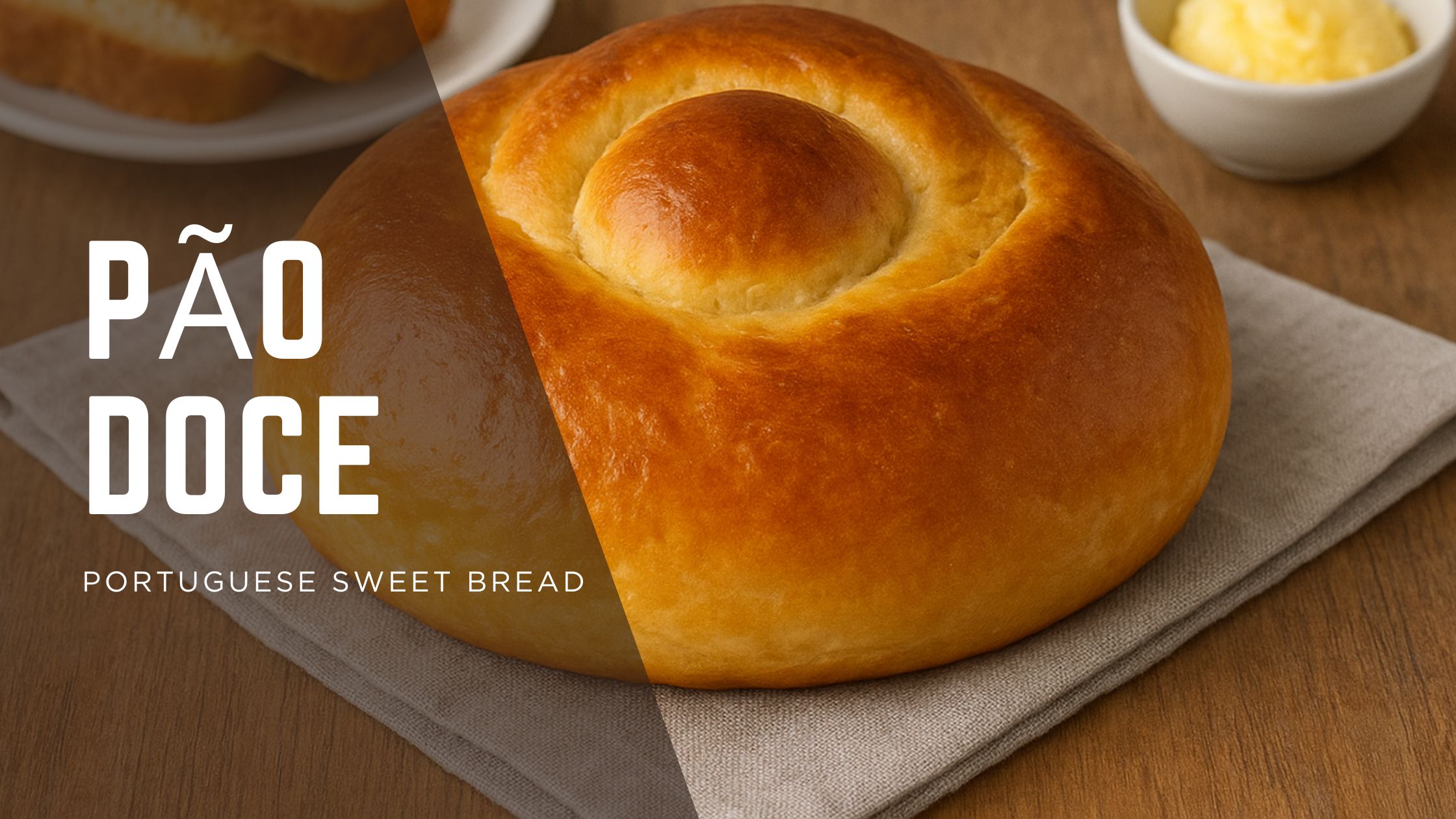If you’ve ever walked into a bustling Portuguese café or grabbed a late-night bite after a night out in Lisbon, you’ve probably come across the Prego no Pão (Prego no Pão). This humble yet irresistible steak sandwich is a staple of Portuguese daily life—succulent meat tucked into a soft bun, often devoured standing at a café counter or on a busy street corner. It’s more than just a snack; it’s a cultural icon. As many locals say, “It’s impossible to visit Portugal and not try a good Prego no Pão!”
A Brief History
The Prego sandwich likely originated in Lisbon or Northern Portugal and has become a national favorite. The name “prego,” which means “nail” in Portuguese, may refer to the way the steak is traditionally pounded—as if nailed to the bread—or to the way the garlic “pierces” the meat’s flavor. Whatever its origin, the Prego no Pão has earned its place in the hearts of the Portuguese.
Ingredients – What you need
(Makes 4 sandwiches)
 For the Steak:
For the Steak:
- 500g of rump steak, sirloin or tenderloin
- 4 crushed garlic cloves
- 2 tablespoons of olive oil
- 2 tablespoons of white wine
- 1 tablespoon of butter
- Salt and black pepper to taste
- Optional: You can use pork loin as a substitute if you don’t have beef.
 For the Sandwich:
For the Sandwich:
- 4 rolls of papo-seco (or carcass, ciabatta as a substitute)
- Mustard (optional)
- Pickles or hot sauce (optional)
- Cheese slices (optional)
- Fried egg (optional)
Step-by-Step Instructions – How to Make Traditional Prego no Pão
1. Marinate the Steak
In a bowl, combine the crushed garlic, olive oil, white wine, salt, and pepper. Rub the marinade generously on both sides of each steak. Let the meat rest for 30 minutes at room temperature or up to 4 hours in the refrigerator.
2. Cook the Steak
Heat a large skillet or frying pan over medium-high heat. Add the butter and melt until lightly browned. Place the steaks in the skillet and cook for 1 to 2 minutes per side, depending on thickness. They should be juicy and lightly seared.

3. Prepare the Bread
While the steaks are cooking, lightly toast the papo-seco rolls. You can lightly butter them and bake them in the oven, or toast them on a hot griddle until they’re warm and crispy on the outside, but soft on the inside.
4. Assemble your sandwich
Place the hot steak directly on the bun. Drizzle with some of the pan juices. Add mustard, pickles, cheese, or a fried egg, if desired.
Cooking Tips for the Perfect Prego
- Cuts of Meat: Sirloin (rump) or sirloin (sirloin) are ideal for their tenderness and flavor.
- Resting the meat: Let the steak rest for a few minutes before assembling to keep it juicy.
- Bread: Use papo-seco or small rolls. They’re crispy on the outside and perfect for soaking up the juice without falling apart.
Variations you’ll love
- Prego with Egg: Top the sandwich with a fried egg — a favorite in many cafeterias.
- Prego with Cheese: Add a slice of melted cheese directly on the hot steak.
- Prego Especial: Add mustard, pickles, caramelized onions or piri-piri sauce for a special touch.
Serving Suggestions
Sides:
- French fries (Portuguese fries)
- Tomato rice
- Simple green salad with olive oil and vinegar
Drinks:
- A chilled imperial (draft beer)
- Vinho Verde
- Freshly squeezed orange juice
Frequently Asked Questions (FAQs)
Can I make a prego with pork instead of beef?
Yes! Although traditionally made with beef, pork steak is a tasty and popular variation.
What is the best type of bread to use?
Papo-seco is the classic choice, but any crusty white bread will do.
Can I grill the steak instead of frying it?
Absolutely. A grilled steak offers a slightly smoky flavor that’s delicious. Just be careful not to overcook it.



